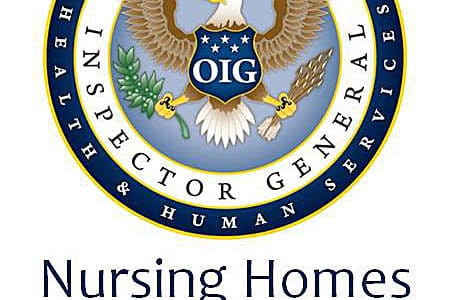It’s October, and that means the much anticipated OIG Work Plan for 2013 has been released and those in the long term care industry should be very interested in the “Nursing Homes” section, which is one of 37 major areas listed in this year’s plan. The OIG Work Plan for 2013 – Nursing Homes section outlines eight audit and enforcement initiatives which specifically addresses compliance risk areas for Medicare and Medicaid providers in the skilled nursing industry. Of these eight focus areas, there are three new projects that were introduced as a part of the OIG Work Plan for 2013 – Nursing Homes.
A review of these projects can yield valuable insight into the focus areas that the OIG wishes to concentrate on in 2013. With that in mind, I always like to suggest to nursing home providers that they obtain a copy of the work plan for themselves. So if you’ve not already done so, you can download the OIG 2013 Work Plan right here on our site in a PDF format. And if you’re interested in a general review of the contents, layout, and past results of the OIG’s Work Plan activities, then check out our previous post, “OIG Work Plan for 2013 – a first look“.
Let’s take a look at the OIG Work Plan for 2013 – Nursing Homes…
As I mentioned, there were three “new” projects that will start in 2013:
State Verification of Deficiency Correction
The OIG will seek to determine if the State survey agencies have verified correction plans for deficiencies identified during nursing home recertification surveys, as required by Federal law. During a prior OIG survey, it was discovered that a State survey agency did not conduct this verification.
Use of Atypical Antipsychotic Drugs
The use of antipsychotics on long term care residents has received a substantial amount of legislative and regulatory attention recently. The OIG will conduct assessments of the administration of these drugs and such assessments will include the percentage of residents receiving these drugs as well as the types of drugs most commonly received.
Oversight of the Minimum Data Set Submitted by Long Term Care Facilities
The MDS is a key component of nursing home billing and thus, it is no surprise that the OIG will focus on the data submitted by providers as a part of the MDS. Specifically, the OIG will analyze the accuracy and completeness of the MDS data submitted by skilled nursing providers.
What about the rest of the initiatives in the OIG Work Plan for 2013 – Nursing Homes?
If you’ve been monitoring the OIG activity in the past, you’ll be familiar (or you should be!) with the following projects. But just in case, let’s review them:
Adverse Events in Post-Acute Care for Medicare Beneficiaries
The OIG will continue to estimate the national incidence of adverse and temporary harm events but also identify contributing factors to these events, determine if these events were preventable and also estimate associated costs.
Medicare Requirements for Quality of Care in Skilled Nursing Facilities
Prior OIG reports showed that approximately 25% of residents’ needs for care were not reflected in care plans, so the OIG will continue to determine the extent to which skilled nursing facilities use Residential Assessment Instruments to develop care plans.
Oversight of Poorly Performing Facilities
Enforcement decisions by CMS and States as a result of surveys and complaint allegations will continue to be examined by the OIG in association with poorly performing nursing homes.
Hospitalizations of Nursing Home Residents
This has been a hot button issue, and a 2007 OIG review uncovered that 35% of hospitalizations during a SNF stay were as a result of poor quality of care or unnecessary fragmentation of services. Consequently, the OIG will determine if hospitalizations were due to manageable or preventable conditions.
Questionable Billing Patterns for Part B Services During Nursing Home Stays
As a part of Congress’ directive to monitor part B services for abuse, the OIG will continue to look at billing patterns associated with part B services.
A quick look at the OIG Work Plan for 2013 & hospices …
Since one of the focuses of the OIG as it relates to hospice includes a direct impact on nursing homes, let’s take a look at the hospice initiatives also:
Marketing Practices and Financial Relationships with Nursing Facilities
As a part of a recent OIG report, it was observed that 82% of hospice claims for skilled nursing facility beneficiaries did not meet Medicare coverage requirements. Due to the potential for inappropriate enrollment and compensation involving hospices and nursing homes, the OIG will continue to monitor hospice marketing materials and practices as well as financial relationships with skilled nursing facilities.
General Inpatient Care
The OIG will continue to review general inpatient care as well as the appropriateness of care claims. This will include the review of medical records to address concerns of misuse of this level of care.
Ok, I’ve seen the OIG Work Plan for 2013 for nursing homes. What do I do now?
Knowledge is power. Now that you know much more about the OIG Work Plan for 2013, it’s time to go back to your compliance program and do a careful and thorough review of its contents. Ask yourself, “does our compliance program thoroughly and completely address the OIG initiatives?” If the answer is anything but a resounding “YES”, then perhaps it’s time to fine tune your program.


Comments are closed.